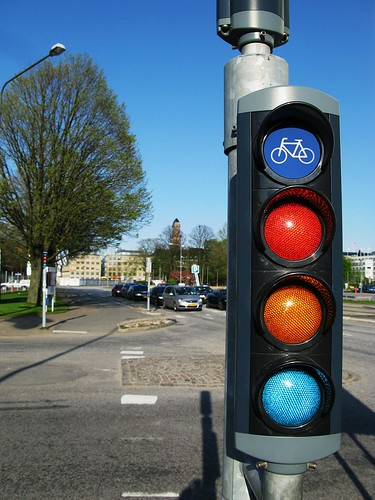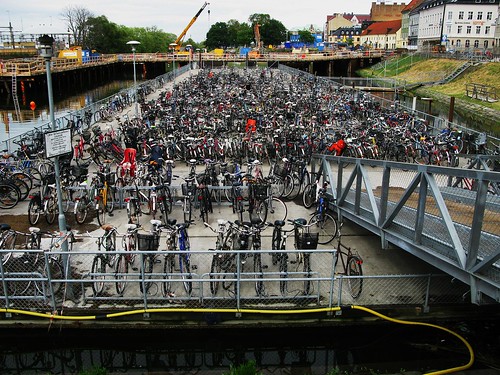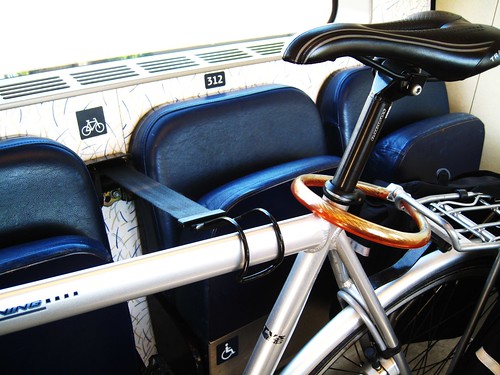
The city of Malmö, Sweden is no stranger to bicycle infrastructure. Just across the bridge from Copenhagen, Sweden's third-largest city has over 40 miles of bicycle lanes. Now those are Swedish miles, mind you, and a Swedish 'mil' equals 10 km so even I can figure out without a calculator that we're looking at 400 km of bicycle infrastructure. (The City of Copenhagen has about 350 km although Greater Copenhagen has over 1000 km of cycle tracks and bike lanes). The point being that Malmö, with a population of about 300,000 plus the metro area, is quite a brilliant cycle-friendly city.
Anyway... this is the GPS age. The City of Malmö decided that many bits of bicycle infrastructure should be given names so that they can be plotted into GPS gadgets.
It doesn't apply to cycle tracks that run along streets - those streets have names already - but the City has named a long list of bits and pieces of infrastructure that are separated from traffic. Paths that run down car-free streets or that cut through parks or short stretches from a train station to a neighbourhood, for example.
What a fun job! It's rare that you get to invent a whole bunch of new names in ancient cities.
It's a great initiative from one of the world's great cycling cities.
The Swedish newspaper Sydsvenskan has a list of the new names. Like you care unless you live there or need to GPS yourself somewhere in the city.

The first sign of a bicycle-friendly city is what the bike racks look like outside the train station. Here's Malmö's.

A couple of years ago they were doing renovations around the station and the massive question of where to put the bikes was solved by placing a temporary floating pontoon in the canal next door, for bike parking.

I often take my bicycle when going to Malmö to shop (that's not my bicycle in the shot) but on the trains between Copenhagen and Malmö, in the bicycle/pram compartments, there are lovely seatbelts for holding your bicycle upright. How cool is that.
If Cycle Chic is your thang, we have set on Flickr of Malmö Cycle Chic.